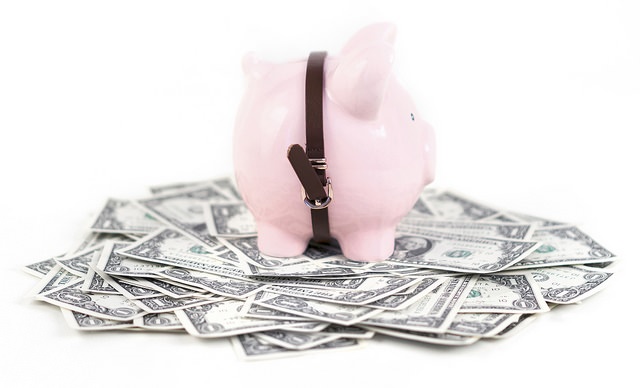Is President Biden’s promised student loan forgiveness coming through or not? Is it on hold temporarily or permanently? What happened? Those are just some of the many questions on all student loan borrowers’ minds.
If you are one of the many students eligible for student loan debt forgiveness, here’s what you need to know.
President Biden’s Original Student Loan Forgiveness Plan
On August 24, 2022, President Biden announced his long-awaited student loan debt forgiveness plan. The three-part plan promised to cancel $10,000 in federal student loans, including Parent PLUS loans, for low- to middle-income borrowers. This included individuals earning less than $125,000 or households with less than $250,000 in income. Pell Grant recipients would get an additional $10,000 in federal student loans forgiven as they typically demonstrate more financial need.
The Department of Education estimated that students graduate with an average of $25,000 in federal student loan debt. Getting a part of their debt canceled would offer some relief to individuals struggling to pay back this debt after the pandemic.
According to the White House, as many as 43 million student loan borrowers would have been eligible for relief. This included the roughly 20 million borrowers who would have had their full remaining balance canceled.
On October 17, 2022, the Department of Education launched a simple debt forgiveness application on its StudentAid.gov website. About 26 million borrowers applied for forgiveness during the first week itself. Of these, around 16 million borrowers received their debt relief approval immediately while other applications were still being assessed.
What Went Wrong With The Student Loan Debt Forgiveness Plan
On November 11, the Department of Education was forced to stop accepting applications. This was after a federal judge in Texas filed a lawsuit declaring the debt forgiveness plan unlawful. Another six states followed suit, challenging the decision to forgive student loan debt. According to the lawsuits, the massive debt relief program was not authorized by Congress. Hence, President Joe Biden doesn’t have the authority to cancel federal student loan debt. These lawsuits have effectively blocked the Department of Education from processing debt relief.
For now, the student loan forgiveness plan is stuck in litigation until the issue has been resolved in court. Until such time, the federal government is unable to accept or process any more applications. They also cannot discharge the debt of the 16 million borrowers whose applications were already approved.
A notice on the StudentAid website says, ‘Student Loan Debt Relief Is Blocked – Courts have issued orders blocking our student debt relief program. As a result, at this time, we are not accepting applications. We are seeking to overturn those orders. If you’ve already applied, we’ll hold your application.’
The Education Department is still encouraging borrowers to apply for debt forgiveness through their online application. They’ve kept this open even though the debt discharged has been put on pause. They’ve stated that they intend to continue reviewing applications so they are ready to process discharges as soon as they are allowed to.

What This Means For You
The White House has filed an appeal requesting the Supreme Court to lift the injunction. President Biden’s administration is committed to fulfilling its debt relief promise. However, a resolution is not expected to happen any time soon and not before the student loan pause expires on December 31, 2022. And nobody knows which way it will go. That means you should expect to resume making federal student loan payments on June 30, 2023.
If you have federal student loans, you would not have been making payments since March 30, 2020. Payments and interest on federal student loans were paused on that date to offer borrowers relief brought on by the pandemic. After several extensions, this loan pause is set to end and payments will become due starting January 1, 2023.
How To Prepare For Student Loan Repayment Effective June 30
The pause on the student loan forgiveness program is sure to upset the budget of all borrowers who were depending on it. If you are one of the millions depending on getting part of your debt canceled, this can be a huge setback. This can be particularly stressful if you have no room in your budget for the additional repayment amounts.
At this time, unfortunately, there are no other options. You have to start making those federal student loan repayments in January 2023. If you don’t, you’ll end up paying a steep late payment fee plus interest on the outstanding balance. This will add to your debt and make it even more difficult to pay the higher balance the following month. To avoid getting further into debt, you must focus on getting your finances in order as soon as possible. You want to make sure you have the funds to afford those monthly repayments as and when they’re due.
Here Are 7 Things To Do To Prepare For Student Loan Repayment
1. Check that your contact information is up to date
You want to make sure that you receive all notifications regarding your loan payments. Log into your Federal Student Aid (FSA) account. Check your residential address, phone number, and email address. Are all details current and up to date? If not, update it. Also, update the information on your loan servicer’s website.
2. Review what your payments will look like
It’s been almost three years since your last loan payment. Chances are you may have forgotten the exact repayment amounts and due dates for each loan. Even if you haven’t, it’s a good idea to go through the details again and refresh your memory. Create a spreadsheet highlighting the repayment amount, payment deadline, and loan servicer for each loan. This will make it easier to review everything at one glance.
3. Review your finances
This is the part most borrowers dread the most but it’s something you have to do. And the sooner the better. Make a note of the balance you have in your savings accounts and fixed deposits. Also, take into account your income for the next two months. Will you have enough funds to cover your January student loan payments? What about February and March? Where will the funds come from for those loan payments? Do you have any assets you can liquidate to free up enough cash for the payments?
4. Cut back on your spending and start saving today
It’s not easy but the only way to save more money is to cut back on your spending. This can be especially difficult with the Holidays just around the corner but you have to dig deep and just do it. Resist the temptation to splurge on expensive gifts for others or yourself. Look for ways to save on groceries and utility bills. Put a hold on dining out and takeout dinners. The small amounts that you save can add up to a substantial amount over the next two months. Look for ways that you can save even more.
5. Review your auto-pay settings
Most student loan borrowers set up autopay to make their loan repayments. This qualifies them for a 0.25% rate discount that lenders offer as a perk for enrolling. If you had set up autopay, it’s a good idea to review your account. Are the autopay instructions still valid or do you need to issue fresh instructions? Do you have enough funds in your bank account for the autopay transactions? Check that everything is in order so you don’t receive any nasty surprises last minute.
6. Consider paying down your loan before December 31, 2022
As of now, the student loan repayment pause is still in effect. It will continue being in effect until December 31 during which time your loans aren’t accruing any interest. So, 100% of any payments you make before December 31 will go toward your principal. This will help to trim your loan amount. Lowering your loan amount will help lower the interest that accrues and also lower the length of the loan. This could save you thousands of dollars over the term of the loan.
7. Look for ways to make more money
So far, you’ve done the best you can with what you have. Now it’s time to expand your search and explore ways to earn some extra income. Can you take up extra shifts at work or maybe pick up an extra job over the weekends? If you cannot work outside the home, look for online freelancing gigs that allow you to work from home. There are lots of ways to shore up your regular income with side hustles.
What If You Still Can’t Afford The Student Loan Repayments?
If your finances are so far back that there’s no way to make up the amount due by January, you have two options.
- Look into the income-driven repayment plans. Federal student loans offer several different repayment plans that you can choose from. These plans base your monthly repayments according to your income. If you’re earning a low income, you can choose a plan that reduces your monthly payments so that they are more affordable.
- Refinance your loans and choose a longer repayment term. This will automatically lower your monthly payments. If you’ve got good credit, you could qualify for a lower interest rate when you refinance. This could save you a few hundred or even thousands of dollars over the loan term.
Our Student Loan Finder tool makes it easy to find and compare loans from reputed lenders.






